Odding: Illustrations on coffee receipts as a cure against the blues
Read the heartwarming story of a Chinese designer, Odding, who turned more than 800 impractical receipts from coffee shops into a piece of art.
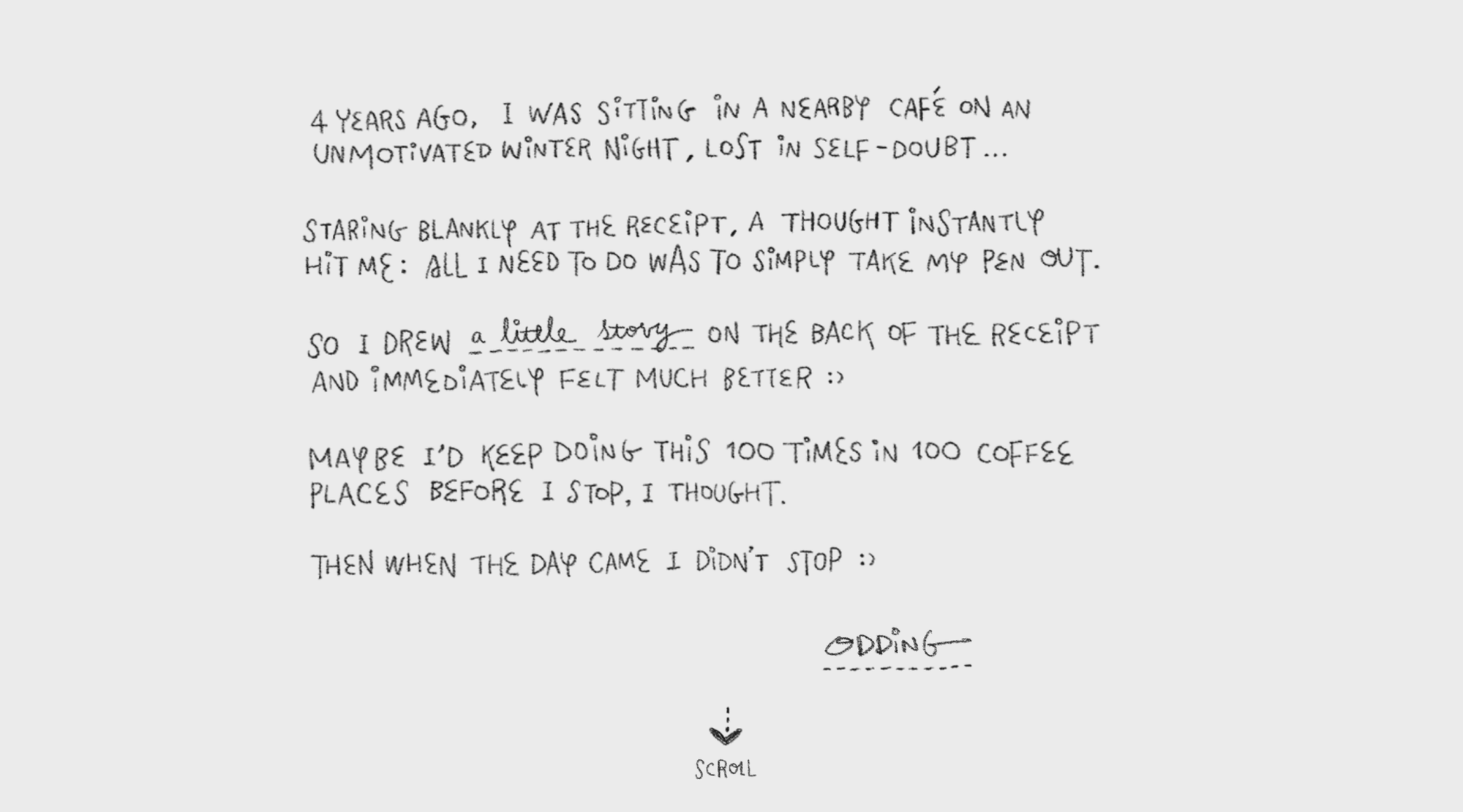
The woman behind this article started out as an architecture researcher, but with the help of a Moleskine sketchbook and a knife, carved her way into the world of graphic and motion design. She’s won several international awards, been featured in It’s Nice That, and worked with Nike, McDonald’s, and other great brands.

Meet Odding Wang, a Chinese creative director, designer, and artist who divides her time between China and Japan. In the text, she gives insights into her creative processes, speaks about the making of the unique Coffee Receipt Stories project, and touches on Tokyo coffee culture.
Hopping into a life-defining competition and ending up in Japan
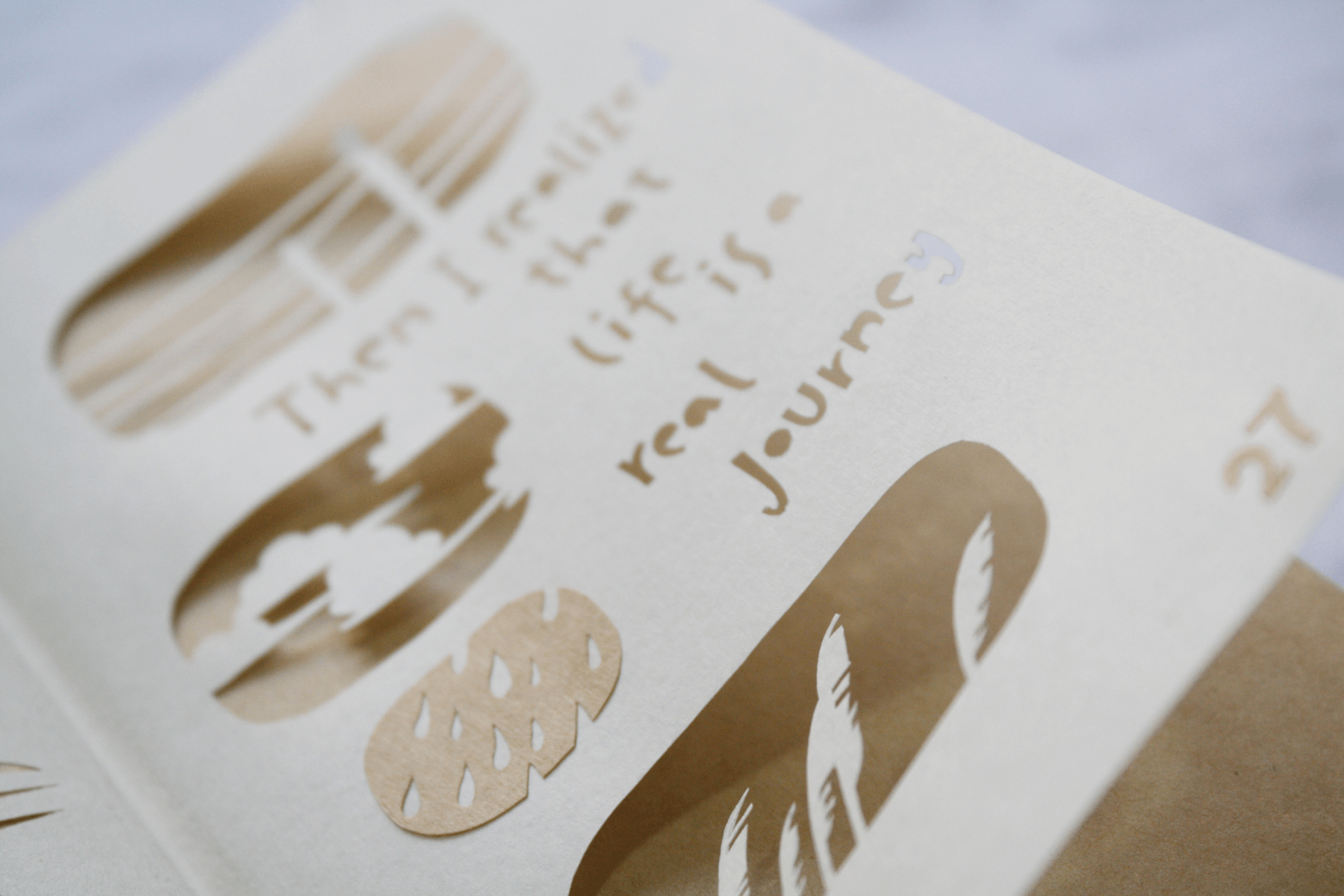
I’m an architect by education, but I’ve been drawing and writing stories since I was little. After I finished my master’s in China, my career path remained undefined until I came across a small competition held by the Italian notebook company Moleskine. The task was to create anything using their products. While most people used a pen on paper, I used a knife to cut out shapes in a thin Moleskine notebook. In my cutouts, I told my own story about growing up as a kid who daydreamed a lot and was deeply interested in the world around me.
“I went there without any clues: the time difference was chaotic, and I got lost a lot, met a bunch of new people—and carefully recorded my experience in a blank notebook.”—Odding Wang
I won the award and got a round-trip ticket to Moscow Design Week as a prize. I went there without any clues: the time difference was chaotic, and I got lost a lot, met a bunch of new people—and carefully recorded my experience in a blank notebook. When I came back, the project won me another cash and travel award, which allowed me to make more connections. For some time, I wasn’t working a regular job, but had many sponsorships and traveled here and there, telling my stories through drawings.
One day, I received an email from a stranger offering me a job at an advertising agency in Japan. I wasn’t interested at first, but eventually went to check things out, thinking that I could always come back home. I ended up staying in Japan for many years and even obtaining permanent residence.
Currently, I work between the two countries as a creative director. When it comes to my creative identity, things get a bit blurry, but at the end of the day, my creativity revolves around communication. At work, I do interactive digital stuff, which I deeply enjoy. In my personal time, I explore and learn. I have been loving songwriting since childhood, but I haven’t got any proper music training. I’m just playing guitar and keys and singing, and I share my songs with my very small circle of friends. Recently I also got very obsessed with motion design. I love the inspiration it gives me, and I would very much like to combine my interests in different fields, doing interactive animated music videos or music-related art installations.
Separating creative approaches to work and pet projects
“The longer I work, the more I believe the role of creatives is to serve: you need to listen before doing any design or trying to bring your own vision to the table. We’re here to support clients who know their brand the best with our expertise, not suppress them.”—Odding Wang
I have different creative processes for personal and client projects. For client work, the design comes on the stage pretty late. The longer I work, the more I believe the role of creatives is to serve: you need to listen before doing any design or trying to bring your own vision to the table. We’re here to support clients who know their brand the best with our expertise, not suppress them. Sometimes, they don’t understand what their problem is. Then, we’re here to help them figure it out. Once the problem is clear, it’s easier to give a solution, and that’s where the design starts. But the communication doesn’t stop here: at every stage you ask the client if your design solves their problem. Also, clients don’t simply buy creative work outcomes, they buy your uniqueness. And once your artistic voice is combined with a real understanding of their problem—it’s a boom.
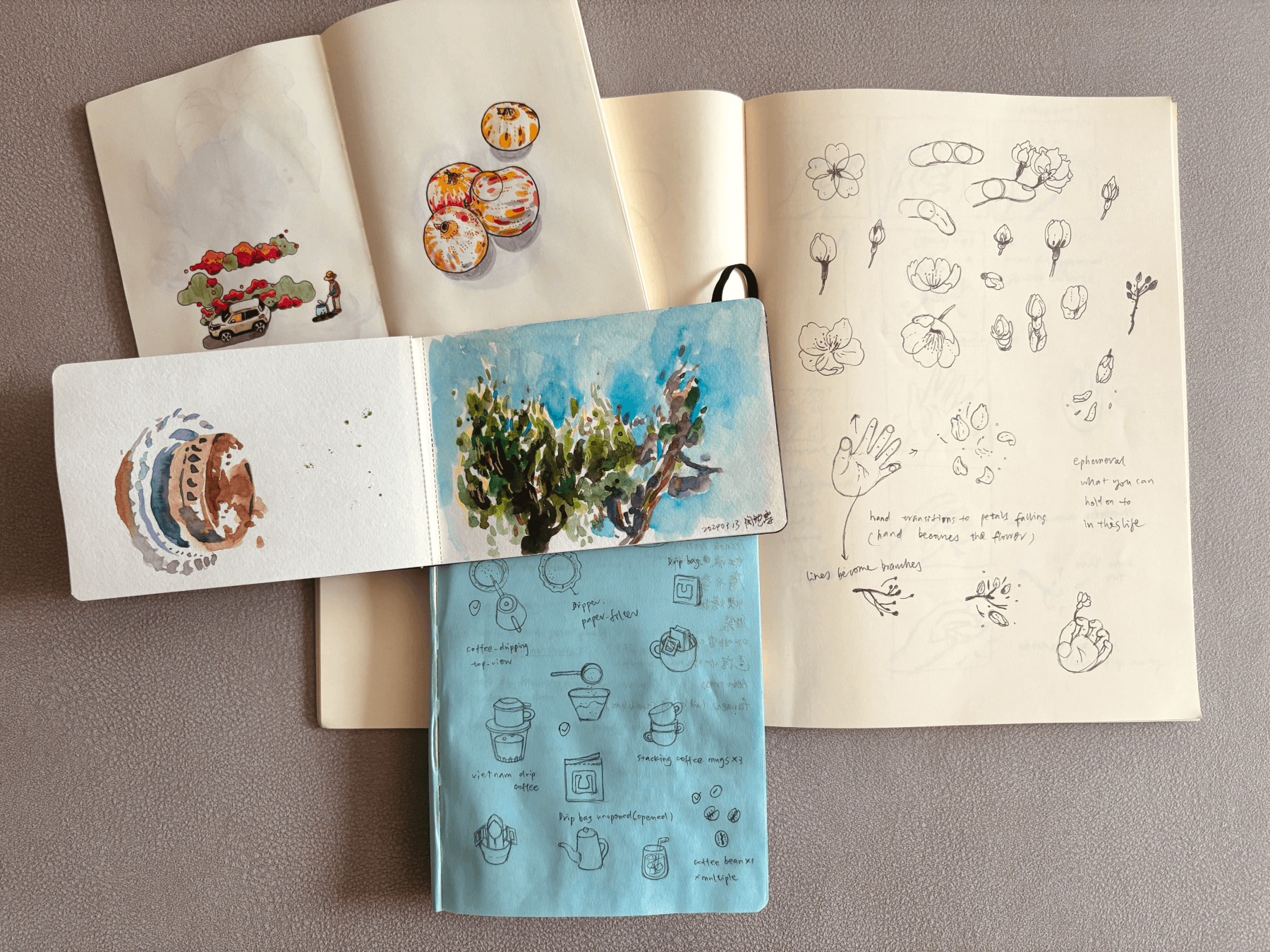
Things are different for personal projects. Once an idea comes through and I find it somewhat interesting, I start scribbling, sketching, or just brainstorming further. If I were to recommend just one tool to designers, it would be a pencil and a stack of blank paper—it’s my all-time favorite tool. Quite often, I see that people are scared of the blank paper, but I’m exactly the opposite. Paper is a perfect canvas, and you can do anything with it—how amazing! When I was in high school, I used to ask my friends a question: what would you bring with you to a remote inhabited island? I would bring a pile of drawing paper. Up to now, wherever I go, I always have a notebook, pen, or pencil with me. Sometimes I get a bit of inspiration while taking a shower and rush to write ideas down. Only after I have a bunch of verbal and visual ideas do I start connecting and developing them further to see where things can go.
Illustrating 800 coffee receipts from Japan and beyond
The Coffee Receipt Stories project started on Christmas Eve before the pandemic. I was in Tokyo, feeling very down and lacking inspiration. I didn’t know how to help myself and went alone for a drink at a local cafe, ordered a light cocktail, and settled in across from a man who was writing something on the back of his receipt. I suddenly got a stroke of inspiration and asked for my receipt to draw a small imaginary story on. As soon as I finished drawing, I felt a lot happier and decided to visit around 100 different coffee shops in Tokyo and make a collection. Within just a few months, I already hit the 100 mark, but then I didn’t want to stop. Then, I went beyond Tokyo, even beyond Japan. Now I’ve had over 800, or more—I lost count.
“After a couple of years, I see these receipts as tiny pieces of a time machine. They tell you the time and the place, and you can recall what you were thinking about and feeling back then.”—Odding Wang
Tokyo was the perfect place to carry out this project since the city is old, and has old traditions as well: more than 100 years ago when it first became Westernized, the Westerners brought broad coffee culture to the city. You can still see a lot of very old, dark coffee shops where senior people make coffee using real craftsmanship. In some shops, they play music, and you’re not allowed to talk. All you can do is listen to the music in the semidarkness and drink your coffee. Japan is also still pretty analog, and most places use paper receipts with nicely designed logos on them. The paper quality is also very good and suitable for drawing.
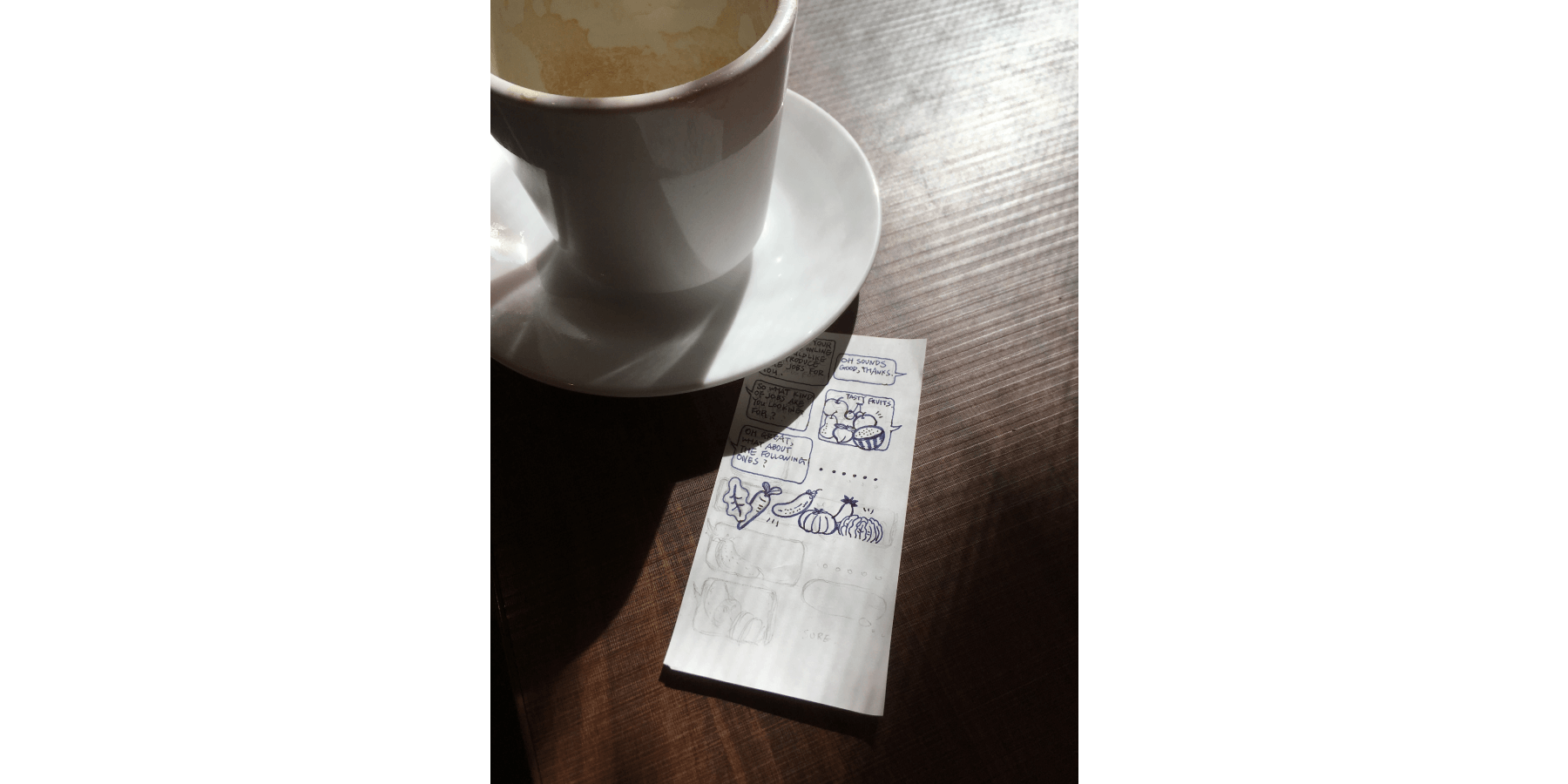
For the first 100 illustrations, I had a rule of drawing straight away on a location and taking a picture of the receipt next to my drink. But after a while, I felt that was too much. I started to collect the papers and make drawings at home while remembering what I wanted to express. Sometimes the project felt like a burden for me: it was really time-consuming. Drawing wasn’t that difficult—it was writing that took most of the time. After a couple of years, I see these receipts as tiny pieces of a time machine. They tell you the time and the place, and you can recall what you were thinking about and feeling back then. I still store all the receipts in envelopes by the 100s, some in Japan, some in China.
Assembling a website to showcase illustrated coffee receipts
“We had to put the receipts of different sizes on the grid using code. Each receipt and the uneven spaces between them required a new set of rules. It felt like a nightmare, so I turned to Readymag.”—Odding Wang
I didn’t plan to do a website for the Coffee Receipt Stories. I first thought of contacting a publisher and getting the project together in a book—keeping the actual size, frontsides, and backsides. Normally, we’d do that in a PDF format, but I also wanted to mimic the actual experience of flipping through them, so I decided that a website would be more suitable than a PDF document. I tried different techniques and even collaborated with my developer friends on a website. We had to put the receipts of different sizes on the grid using code. Each receipt and the uneven spaces between them required a new set of rules. It felt like a nightmare, so I turned to Readymag.
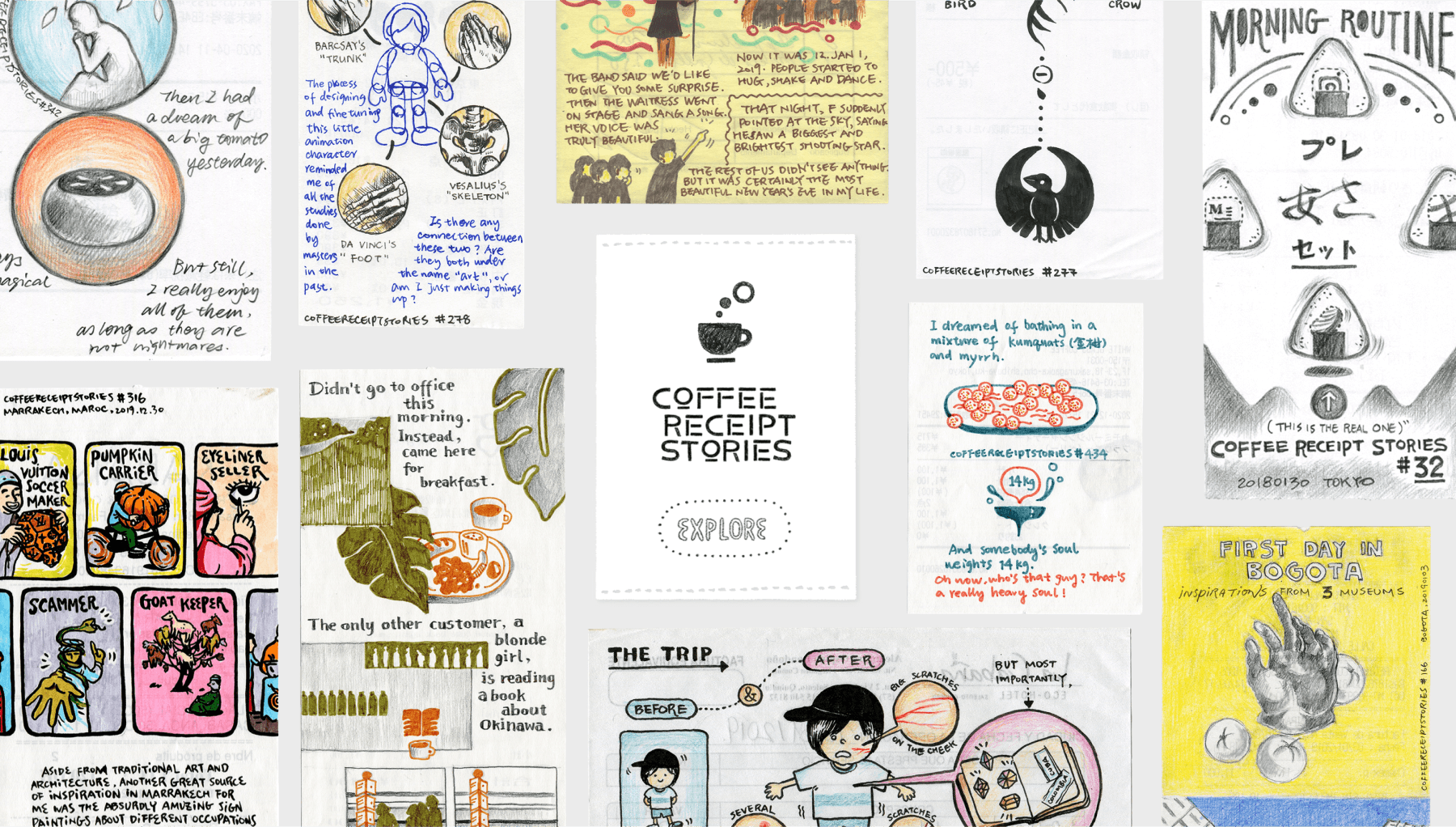
7 years ago, well before the Coffee Receipt Stories, I tried a few different web design tools to document my travel stories. I was looking into tools that allow for designing editorials and came across nice layouts made with Readymag. I tried the functionality and started building my personal websites with the tool. I ended up using it not only for my passion projects but also to share prototypes with my clients since it’s very easy to update the layouts—change what you want, press the button, then refresh the page. Whenever I want to make something interactive from scratch, I use Readymag because it’s so easy and it’s constantly evolving: a few years back, I lacked a responsive design feature, but now it’s already there.
After I nailed the website, I was so immersed in the site itself that I forgot to contact any editor, so the Coffee Receipt Stories is only live in digital format right now.
Finding inspiration in fossils, poetry, and local markets
“Sometimes, I buy poetry books because whenever I open them, I come across images, states, and things that inspire me to create.”—Odding Wang
Actually, I find my greatest inspiration in nature. Ironically, I live in a metropolitan city since there’s money and work here. I just love nature so much and never miss a chance to go to a forest or near the sea. When I’m not in nature, I read books about nature or find nature in different urban places. I love Japanese architecture for its philosophy of reconnecting with nature in general, and the works of Kazuyo Sejima, a female architect who designed several amazing museums I’ve been to. And my all-time favorite artist is David Hockney. His nature-inspired work fills me with positivity and inspiration whenever I see it, allowing me to embrace life in my own way. I also visit natural history museums quite often—they’re my favorite places in the world. I’m not so much interested in living animals, more in the beauty of their bones and other fossils I can find there.
Traveling also inspires me a lot. My cherished places in almost every country are food markets: I explore them to observe how people, especially old people, buy food, communicate with each other, and perform their routines. One of my ongoing projects revolves around short animated films about markets. It takes a lot of time to experiment and animate stuff since it’s going to feature several markets, all in different styles.
Another thing that keeps my fire burning is poetry, because poetry is magic. It gives you a lot of space. The lines might be short, but once you read them, the space that opens up is almost infinite. Sometimes I buy poetry books because whenever I open them, I come across images, states, and things that inspire me to create. In my head, poetry resonates with the works of Canadian designer and director Geoff McFetridge.
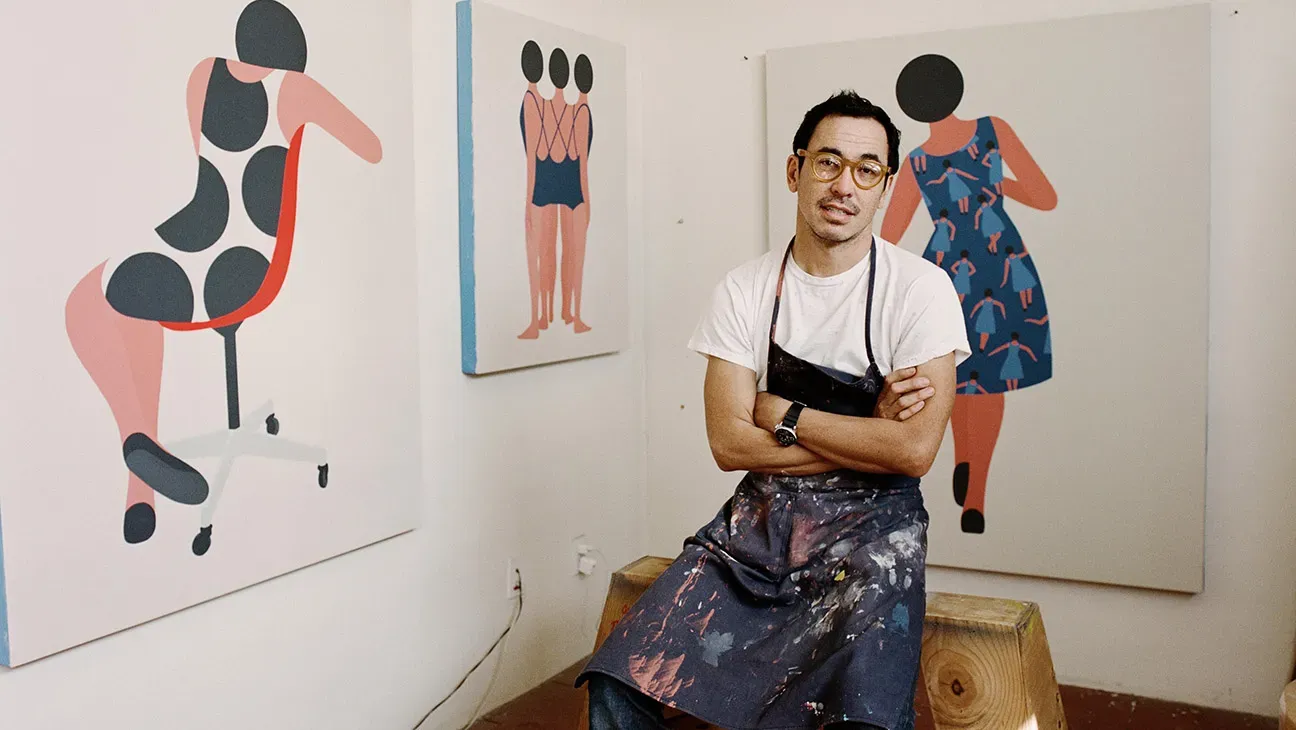
He’s now more of a fine artist, but he spent significant time as a designer and collaborated with notable with so many notable brands, from Hermes to Apple. He’s developed his own voice in illustration and found a very conceptual way of expressing ideas. His works are great in the way poetry is: simple lines, but outside of those lines, there’s a whole new place you can explore.